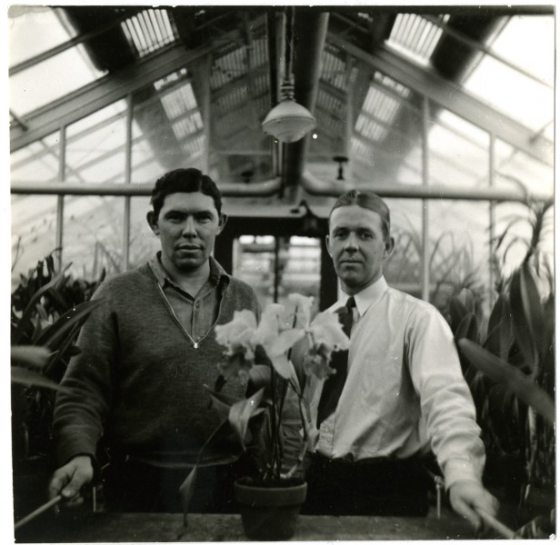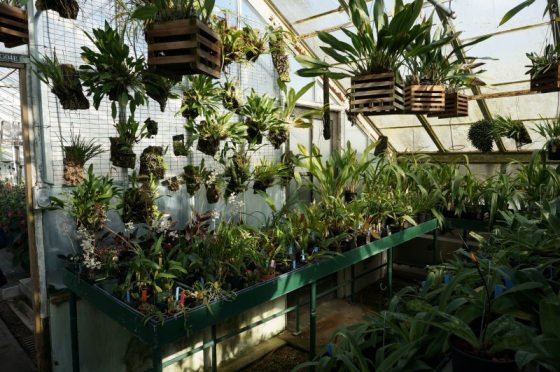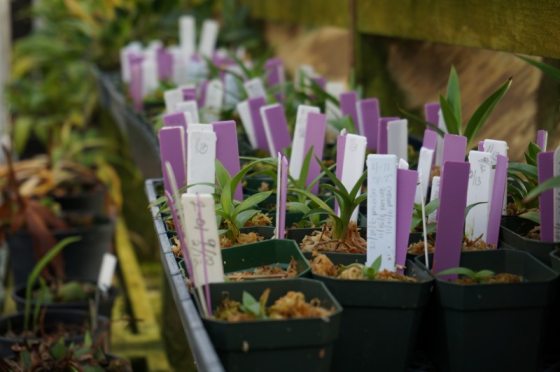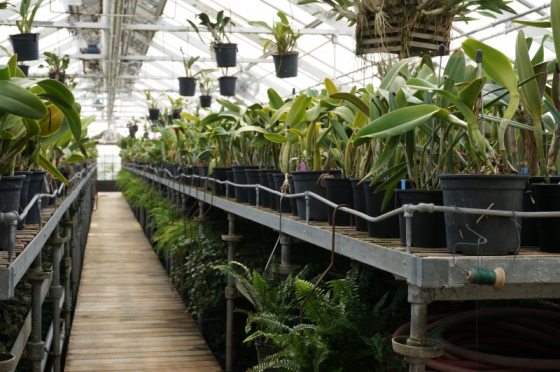Our historic orchid growing houses, normally open only to Longwood’s staff, were constructed between 1926 and 1962. Today we use these houses to grow and care for the nearly 9,000 orchids in our collection. Visit us this Saturday, March 23, 2013, for our final Beyond the Garden Gates Day of the Orchid Extravaganza season, when you’ll have the rare chance to visit these spaces in person.

This photo was taken in the 1930s by Louis Jacoby, the first orchid grower at Longwood from 1924 until his death in 1956. It pictures former employees Robert “Bob” Peterson (left), who was a gardener and custodian from 1926 to 1967, and Newton Parsons (right). At this time Longwood’s gardeners would have worn ties and white shirts buttoned at the wrists while they worked with plants and soil each day. The original photos from Louis Jacoby are stored in the Longwood Gardens Archives.

Many orchids are in bloom now in the warm climate growing house. Each of our five orchid growing houses have different temperature settings to accommodate the preferences of nearly 9,000 orchid plants.

The cool climate orchid growing house contains orchids that are native to the Andes Mountains. Miltoniopsis Eros ‘Kensington’ adds some color to this growing house.
Learn more about Miltoniopsis Eros ‘Kensington’ and see it up close.

We use our growing space efficiently and can accommodate mounted, hanging, and potted orchids. The hanging teak containers—built by Longwood’s carpenters—allow us to fill the growing houses with even more plants. We also mount orchids to bark and rocks with wire save space and mimic how they would grow in the wild. Eventually the roots take hold and the orchids fasten themselves onto their mounts without the help of wire.

All plants in the growing houses are tagged and color-coded by year. Lavender signifies plants started in 2013. In addition to their starting year color coding system, some plants also have tags to note their water requirements. When plants move to the display, black metal labels are attached to the plants noting their common and scientific names so that our guests can identify them. Once the plants are pulled from the display we sterilize and store those tags until that plant is put on display again.
See what these Disa hybrid orchids will look like when they are full grown.

Take a sneak peak of this growing house in our Beyond the Garden Gates: Orchid Extravaganza video:
View more photos of our orchid growing houses on our Facebook page.


